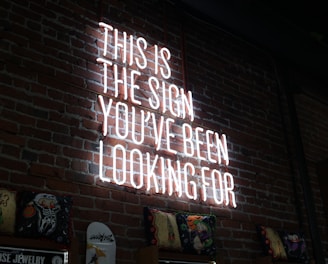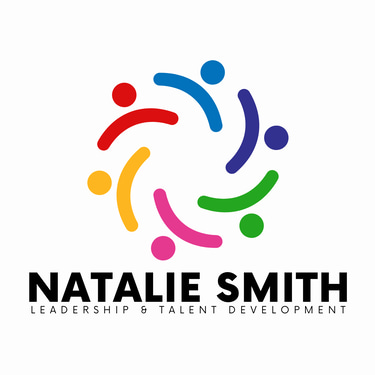How to Fix Workplace Conflict Forever - Part 2
Ready to master workplace conflict resolution? In Part 2 of this series, learn essential strategies to improve communication, resolve conflicts effectively, and build a positive work environment for a productive team.
Introduction
Welcome back to Part 2 of our series on fixing workplace conflict for good! In Part 1, we explored the nature of workplace conflict, types of conflicts, and the potential impact of unresolved issues. Today, we’re diving into three essential strategies that will help you not only address but resolve conflicts in a way that strengthens relationships and fosters a healthier workplace. Whether you’re a team leader or working on personal skills, these techniques—effective communication, conflict resolution strategies, and creating a positive culture—will transform your workplace interactions.



1. Mastering Effective Communication Skills
Communication is the backbone of conflict resolution. When done effectively, it ensures everyone feels heard, valued, and understood. Here are three techniques to boost your communication skills:
Active Listening: This involves fully concentrating, making eye contact, and responding thoughtfully to show you understand. For example, if a team member expresses frustration over a project, avoid jumping in with solutions. Instead, listen, ask clarifying questions, and summarize their main points. This simple step can help defuse tension and build trust.
Empathy: Empathy is about understanding and validating others' feelings. Acknowledging someone’s stress or frustration can make them feel respected and valued. You might say, “I can see you’re feeling overwhelmed. Let’s find a way to tackle this workload together.” This builds a bridge of understanding, essential for resolving conflicts.
Assertive Expression: Assertiveness balances clarity and respect. It’s about expressing your views confidently without being aggressive. If there’s a disagreement over project priorities, an assertive approach might be: “I understand your perspective on Task A, but I believe Task B also has long-term benefits. How can we balance both?” This maintains respect while expressing your viewpoint.
Together, these communication techniques create a foundation for respectful and effective conflict resolution in the workplace.
Watch video: "How to Fix Workplace Conflict Forever - Part 2!"
2. Essential Conflict Resolution Techniques
When conflict arises, having structured approaches to address it makes all the difference. Here are three powerful conflict resolution techniques:
Negotiation: Negotiation involves open discussion to find a solution that satisfies both parties. Imagine two departments vying for a limited budget. Through negotiation, they can openly share their priorities and constraints, finding a middle ground that serves both teams’ needs.
Mediation: Mediation uses a neutral third party to facilitate understanding between conflicting parties. This technique is especially helpful when emotions run high. In cases where team members are frequently at odds, a mediator can guide them in finding common ground, reducing tension and restoring harmony.
Collaborative Problem-Solving: This approach promotes teamwork to find a win-win solution. In a project meeting, for instance, team members with differing strategies might brainstorm to create a plan that incorporates everyone’s insights. Collaborative problem-solving turns conflict into an opportunity for innovation.
Each of these techniques provides a structured way to address conflict, helping teams build stronger, more resilient working relationships.
Related video: "How to Fix Workplace Conflict Forever - Part 1!"





3. Building a Positive Workplace Culture
A proactive way to reduce conflicts is by fostering a positive workplace culture. When employees feel respected and supported, conflicts are less likely to escalate. Here’s how to create a constructive work environment:
Encourage Open Communication: Make it easy for employees to express their concerns. Regular feedback sessions, open-door policies, and transparent communication reduce misunderstandings and create a safe space for dialogue.
Recognize and Reward Achievements: Regular acknowledgment of employees’ efforts boosts morale and makes them feel valued, which reduces frustration and competition that can lead to conflicts.
Implement Wellness Programs: Support your employees’ well-being through stress management workshops, wellness resources, and mental health support. Healthy employees are more engaged, reducing the potential for conflict and fostering a collaborative atmosphere.
According to Gallup, highly engaged workplaces see a 41% reduction in absenteeism and a 17% increase in productivity. Investing in a positive culture not only reduces conflicts but also improves team morale and overall productivity.
Related video: "Unlock The Productivity Secrets Your Boss Doesn't Want You to Know"



Taking Action
Resolving workplace conflict effectively takes effort, but the results are worth it. By enhancing your communication skills, utilizing conflict resolution techniques, and building a positive work environment, you’ll create a space where everyone can thrive.
Unlock Your Potential with a Free 1-Hour Coaching Session
Are you ready to take your personal and professional growth to the next level? I’m offering a Free 1-hour coaching session tailored to your unique goals—whether it’s for career advancement, personal development, starting a business, side hustle or how to earn passive income. Don’t miss out! Book Your Free Session Now and start your journey to success! https://bit.ly/FreeCoachingNow
Download Your Free SMART Goals Resources
You can download two powerful tools to kickstart your goal-setting journey. Scroll down on the home page to 'Discover Resources to Thrive' to access these free resources.
SMART Goals Resource Guide: Learn how to create Specific, Measurable, Achievable, Relevant, and Time-bound goals.
SMART Goals Tool Template: Apply what you’ve learned from the guide with this practical template to streamline your goal-setting process.
Related Videos
Related Blogs
Coming Soon
Related Articles
Recommended Tools and Resources:
50% off all of my Leadership and Talent development Digital Products. DISCOUNT CODE: RG50%D: https://bit.ly/TheGrowthGateway
Influencing Skills Self-Assessment and Development Toolkit: Transform Conflict into Collaboration - Workplace conflict often stems from misunderstandings and misaligned communication. The Influencing Skills Self-Assessment and Development Toolkit provides actionable strategies to build trust, improve communication, and lead your team through challenges with confidence.
Recommended Resources:.
Another valuable resource that has been instrumental in addressing team dynamics and improving leadership skills is The Five Dysfunctions of a Team. This book is essential for understanding and improving team dynamics, building trust, and fostering collaboration. You can check it out and purchase it here: The Five Dysfunctions of a Team.
Conclusion
Conflict resolution isn’t just a skill—it’s a crucial part of a productive, healthy workplace. By implementing these techniques, you’re setting your team up for long-term success and growth. Join us in transforming workplace interactions with these strategies to foster a supportive and engaging environment. Share your thoughts, start implementing these strategies, and watch your workplace transform for the better. Until next time, keep striving for workplace harmony and success.
Disclaimer: Links included are affiliate links. If you purchase products using the links included, I may receive a commission however, there is no additional charge to you.


